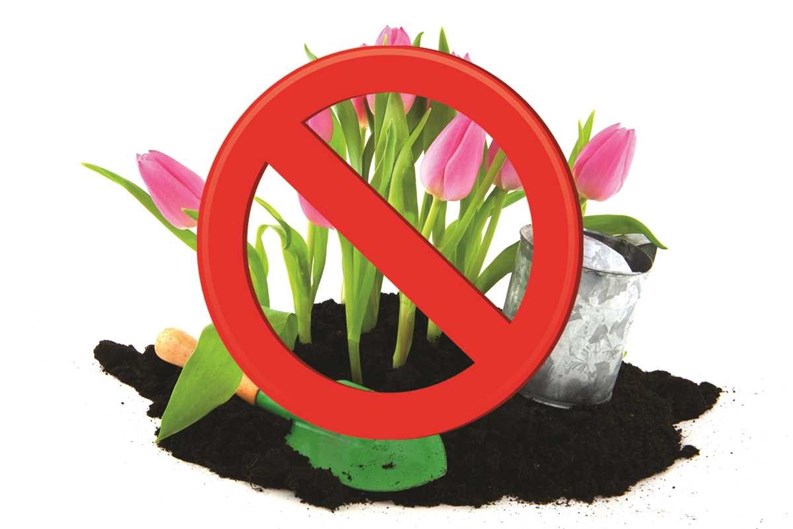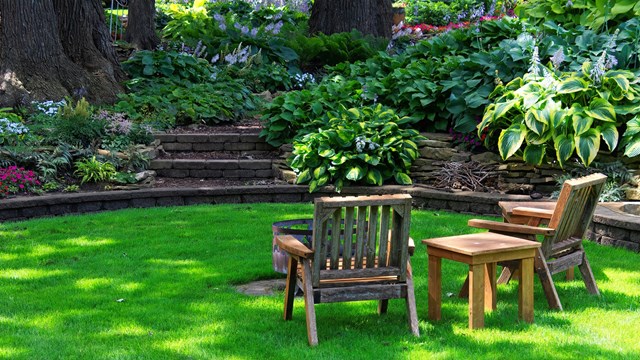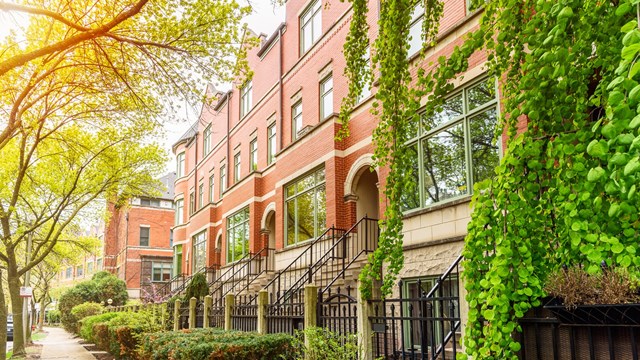As cosmopolitan and a bustling city Chicago is, it will always be partly known for its harsh winters. Chicagoans suffer through a good five-to-six months of winter, and they should be rewarded in every possible for getting through it. While the Chicagoland area comes to life during the spring and summer months, a large symbol of a welcoming outdoors is the wonderful plant life that blooms in the spring.
Establishing and/or maintaining an attractive landscape in a climate this varied is a definite challenge, perhaps even more so for multifamily environments in urban or suburban areas. When you factor in the additional foot traffic, pets, litter and pollution commonly associated with multifamily dwellings, it can be tough for plants, trees, and flowers to survive, let alone thrive.
Down the Garden Path
In an effort to save money, some boards and grounds committees put a great deal of time and energy into do-it-yourself landscaping, rather than hiring professionals. Weeding flowerbeds and raking leaves is one thing; but if a committee chooses the wrong type of plant, or puts a shrub, tree, or flowerbed in the wrong place, the poor results may be a very costly mistake. In addition to being an eyesore, misguided plantings can result not just in replacement costs for dead or damaged plants, but even repair costs for structural damage to roofs, foundations, or pavement.
This is not to say that a volunteer landscaping or gardening committee is a bad idea—far from it. If your community includes folks who truly enjoy the physical labor associated with weeding, planting, and so forth, they can absolutely participate—but perhaps under the guidance of a landscaping professional hired on a consulting basis to develop a sound plan with site-appropriate plants. With the changeable Chicago climate, plants that can adapt to extremes in the weather are an obvious choice, but investing in a consultant to get a proper plan in place can also save a considerable amount of money in the long run.
Bringing an Expert On Board
The best way to avoid costly landscape mistakes is to work with a professional. Landscaping may not seem like a very high priority when compared to other facets of managing a property, but in fact, a community's landscape is the first thing guests and potential buyers see. “If landscaping is not meeting expectations you can lose curb appeal which then risks potential sales and home values,” says Cindy Rusniak, a portfolio manager at FirstService Residential Illinois in Chicago.
Once the board has a rough idea of their vision, their expectations, and their budget constraints, it is time to reach out to a professional. It's important to develop a plan over the contract terms with the chosen vendor. “Key times of the year are going to be March, which is the preseason. Then, you want to set up your budget, set up the expectations, and get to know one another and plan ahead,” says John Czapla, an account executive at Landscape Concepts Management in Grayslake.“I would say late April, early May, is when you're going to do your property evaluations. At that time, the board and a property manager should be fully engaged so that things get completed at the right time,” says Czapla. Mother Nature can't reschedule. If the proper plan isn't in place by early May, certain aspects of landscape work will be difficult to revisit once plants have begun to bloom.
Of course the vast majority of actual planting and upkeep takes place in the warmer months, but landscapers have to get a lay of the land during the winter months as well to make sure they're making the right decisions about what plants to use and where. “Whenever you're in an area that is 'high salt;' if you're in the sidewalks and driveways, you have to be conscious about what kind of plant mulch are you using, and potentially even utilizing annuals in some of those spaces because of the fact that I know we've had plants that just will die every year because that's where they dump their snow,” says Kelly Bolger, vice president of business development at Christy Webber Landscapes in Chicago. “And if you're not also the snow provider for that client then really doing an assessment of how the snow was provided during that past season, and maybe even doing a drive-by over the winter to see where the snow piles were dumped and everything just so you can see where the damage will be,” she says.
To the layman, gardening and landscaping might get complicated when it comes to weather, soil, and other variables, but where to put what plant is about much more than aesthetics. “If proper spacing is not used during the initial designing phase, it sets in place a cycle of overgrowth and improper, aggressive pruning, which can result in an aberration of the natural growth habit. Not only does this ruin the design aesthetic, it also incurs increased maintenance cost until the damage results in replacement of the affected plants,” says Bolger.
That's why plant type can be more important than almost any other factor in creating successful curb appeal. “You have to go with the new varieties of the old standbys. And that's because they have stood the test of time, whether they're native or they're adaptive to our area. For example, there is the Black-eyed Susan. Using some of the newer varieties of Black-eyed Susan, they bloom longer, they withstand drought much better and over winter better in our climate,” says Czapla.
These issues are particularly acute when it comes to tree placement. When an HOA wants trees included in a landscape design, it pays to consult a certified tree expert to make sure both the species proposed and their intended places are appropriate. An arborist will have a deeper understanding of proper tree selection and planting techniques. On larger projects, arborists work in coordination with landscape architects and landscapers to insure that the final project will be sustainable and not need a great deal in upkeep.
If an association does not have funding for a professional landscape contractor, associations should do as much research as possible beforehand, and use hands-on project management during the installation of new landscaping to avoid issues that may have been missed, and/or unforeseen changes. Another golden rule relayed by experts is that proposed planting designs should always be accompanied by a maintenance program. The program can provide illustrations of the desired look, and tips on proper pruning and nutrition that will ensure plant vigor and longevity.
Communities tend to get more excited about trees and flowers. After all, those are the elements of the landscape that are the most visible and appreciated. It can be easy to overlook lawn care, which may not be as sexy, but if improperly treated, can be more of an eyesore than any overgrown plant. “Turf is on average 75% of the property, most of the landscape in an HOA is going to be be turf. So without a proper landscape contractor that has horticulture knowledge, I would say applications of fertilization may be skipped and be weakened, and may be applied at the wrong time,” says Czapla. “With that being said, if applications are completed per the contract, and per horticulture standards and weather conditions, crabgrass and weeds will be pretty much non-existent if they're taken care of at those specific times with the proper chemicals.”
We Need A Do-Over
If a board is already dealing with an overgrown landscape problem, there are ways to make corrections. Rejuvenate pruning or “winter pruning” is always the less expensive/aggressive option. Most deciduous material, plants, and trees can be severely reduced in height and shape over the dormant winter months. This option is considerably less expensive than removing, designing, and installing new plant material throughout an entire property.
An investigation of restorative pruning techniques such as plunge pruning, or proportional canopy reduction over a number of growing years can be helpful. There are also certain chemical products that retard growth, and reduce the need for frequent pruning. Replanting will always be the most costly option.
Besides overgrowth of trees and plants, landscapers also have to deal with soil compaction from foot traffic in multifamily environments. Once these areas become compacted and sunken, they tend to collect water, which reduces oxygen and can result in damaged or killed root systems. An arborist using an AirSpade™ can correct compaction by breaking up the compacted soil with air pressure and incorporating compost.
As with most facets of keeping up a well-maintained property, associations and landscapers alike have to keep good communication in mind. “A good landscaper will take pride in their attention to detail. This includes good communication and proactively bringing issues to your attention. Since the landscaper is the expert, they should notify you when the vegetation end of life is approaching, and/or when plants need to be removed or replaced,” says Rusniak.
Landscaping is not a “one and done” project but an ongoing endeavor requiring time, talent, and funding to create and maintain the best community appearance all year long. Remember to take advantage of expert recommendations and suggestions—it’s the smart way to enhance and preserve both the beauty and the investment in your community’s landscaping.
Anne Childers is a freelance writer and a frequent contributor to The Chicagoland Cooperator.







Leave a Comment